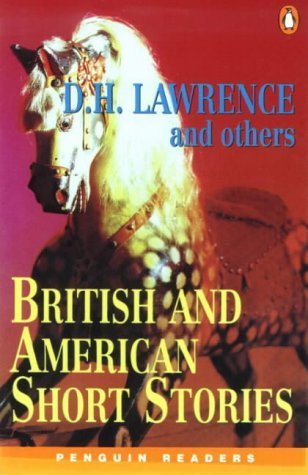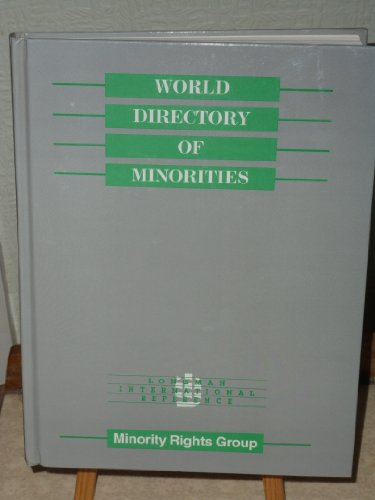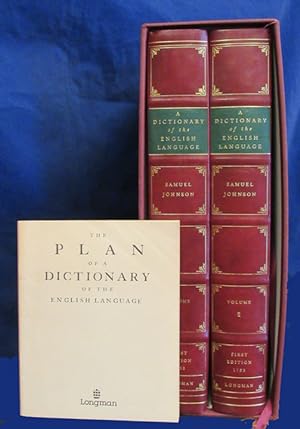uk longman 1990 (4 results)
Product Type
- All Product Types
- Books (4)
- Magazines & Periodicals
- Comics
- Sheet Music
- Art, Prints & Posters
- Photographs
- Maps
-
Manuscripts &
Paper Collectibles
Condition
- All Conditions
- New
- Used
Binding
Collectible Attributes
- First Edition (1)
- Signed (1)
- Dust Jacket (1)
- Seller-Supplied Images (2)
- Not Printed On Demand
Seller Location
Seller Rating
-
British and American Short Stories - Simplified
Published by UK: Longman, 1990, 1990
ISBN 10: 0582528127ISBN 13: 9780582528123
Seller: Peakirk Books, Heather Lawrence PBFA, Sheringham, United Kingdom
Association Member: PBFA
Book
Paperback. Pbk; vg-; Vocabulary of 2000 words required; recommended for people to whom english is a second or foreign language.
-
The South East from AD 1000
Published by Published by The Longman Group UK Limited, Longman House, Burnt Mill, Harlow, Essex First Edition . Essex 1990., 1990
Seller: Little Stour Books PBFA Member, Canterbury, United Kingdom
Association Member: PBFA
First Edition
First edition hard back binding in publisher's original black cloth covers, silver title and author lettering to the spine. 8vo. 9'' x 6¼''. ISBN 0582492467. Contains [xix] 444 printed pages of text with monochrome illustrations and photographs throughout. Fine condition book, in Fine condition colour photographic dust wrapper. Dust wrapper supplied in archive acetate film protection, this protects and prolongs the life of the paper, it is not adhered to the book or to the dust wrapper. Member of the P.B.F.A. KENT [Topography].
-
WORLD DIRECTORY OF MINORITIES - LONGMAN INTERNATIONAL REFERENCE
Published by LONGMAN GROUP UK LTD ND 1990? H/B, 1990
ISBN 10: 0582036194ISBN 13: 9780582036192
Seller: Sue Lloyd-Davies Books, CARMARTHEN, United Kingdom
Book
Hardcover. V GOOD EXLIB STAMPS& LABEL ISBN 0582036194 SMALL MARKS TO PAGE EDGES BOXJV; 9635.
-
A DICTIONARY OF THE ENGLISH LANGUAGE, in Which the Words are deduced from their Originals.To Which are Prefixed a History of the Language and An English Grammar; (With), THE PLAN OF THE DICTIONARY OF THE ENGLISH LANGUAGE
Published by London Printed by W. Strahan, For J. and P. Knapton; T. and T. Longman; C. Hitch and L. Hawes; A. Millar; and R. and J. Dodsley, (but, Longman Group UK0 1755, (but, 1990), 1990
Seller: Buddenbrooks, Inc., Newburyport, MA, U.S.A.
Signed
4 volumes, including two of the DICTIONARY as originally issued, another being the facsimile of the first edition of THE PLAN OF THE DICTIONARY. and a volume containing essays concerning The Genesis of the Johnson's Dictionary and The Lexicographic Achievement of Johnson. First Edition of the Facsimile of the Original First Edition of each title. Title-pages printed in red and black, woodcut tailpieces. Royal folio (410 x 260 mm.), expertly bound to style in full red Cabra leather, the spines with raised bands gilt ruled creating compartments which are paneled in gilt, one compartment with green lettering label gilt, three other compartments with gilt lettering, the covers with gilt fillet rules at the borders, original end-leaves, the Essays and PLAN in original wrappers, the volumes all housed in the original slipcase. Original Collation: Vol. I [A]2, B-K2, a-c2, d1,2B-2K, 2L-13A2, one leaf signed 13B-14Z; Vol. II [-]1, 15A-16Z2, one leaf signed 17A-17Z, 18A-22E2, one leaf signed 22F-22Z, 23A-27D2, one leaf signed 27E-28Z, 29A-31C2 . A very handsome copy beautifully preserved. The bindings are in excellent condition. The text-blocks both clean and unpressed. This is a fine, handsome and clean set of the volumes. Both the PLAN and the Essays volumes also in fine condition as well THE FINE LONGMAN FACSIMILE OF THE HIGHLY IMPORTANT FIRST EDITION OF SAMUEL JOHNSON S MASTERWORK AND THIS A HANDSOME AND CLEAN AND LARGE COPY. "The most amazing, enduring and endearing one-man feat in the field of lexicography (PMM). Begun in 1747 and printed over five years, Johnson's DICTIONARY set the standard for all subsequent lexicographical work. Its excellence was immediately recognized in all quarters and the first edition of two thousand copies sold quickly. What set Johnson's DICTIONARY apart from earlier efforts was his reliance on the examples of English literature rather than his own intuition or previous word lists or dictionaries, a method that has been the standard ever since, from Richardson and Webster to the Oxford English Dictionary. Johnson, in undertaking this vast work, set out to perform single-handed for the English language what the French Academy, a century before, had attempted for French. He hope to produce "a dictionary by which the pronunciation of our language may be fixed, and its attainment facilitated;" and though, of course, no language can be frozen in time, by aiming at fixing the language he succeeded in giving the standard of reputable use. As Noah Webster stated, his work "had, in philology, the effect which Newton's discoveries had in mathematics." Johnson presumed to finish the work for the Dictionary in three years by his own labor, but he underestimated the work required and it eventually took nine years to complete (though not all of his time was spent upon the Dictionary, as he was also the editor of The Rambler at this time) and required the assistance of six amanuenses--five of whom, to Boswell's satisfaction, were Scotsmen. "Johnson's achievement marked an epoch in the history of the language. The result of nine years labor, it did more than any other work before or since towards fixing the language. The preface ranks among Johnson's finest writings. The most amazing, enduring, and endearing one-man feat in the field of lexicography" (Printing and the Mind of Man). "The most important British cultural monument of the eighteenth century" (Hitchings); "the only dictionary [of the English language] compiled by a writer of the first rank " (Robert Burchfield) and first genuinely descriptive dictionary in any language. "Johnson's writings had, in philology, the effect which Newton's discoveries had in mathematics" (Webster). "It is the fate of those that toil at the lower employments of life, to be rather driven by the fear of evil, than attracted by the prospect of good; to be . punished for neglect, where success would have been without applause, and diligence without reward. Among these unhappy mortals is the writer of dictionaries . Every other author may aspire to praise; the lexicographer can only hope to escape reproach" (Johnson, preface to the present work). Samuel Johnson's monumental work, which drew on all the best ideas and aspects of earlier dictionaries, was published on April 15, 1755 in an edition of 2000 copies. The price was a high one £4 10s, or £3 10s to the trade. The group of publishers whose names appear in the imprint were joint proprietors, having paid Johnson £1575 in installments for copy which took him eight years to complete, although in the final months publication was held back for the granting of his Oxford M.A. (Feb. 20, 1755). Some of Johnson's advance was used to rent the well-known house in 17 Gough Square, where the garret became his "dictionary work-shop." He called on the assistance of six amanuenses, five of whom, Boswell proudly records, were Scotsmen, and who were almost derelict when he hired them. "With no real library at hand, Johnson wrote the definitions of over 40,000 words.illustrating the senses in which these words could be used by including about 114,000 quotations drawn from English writing in every field of learning during the two centuries from the middle of the Elizabethan period down to his own time" (W. Jackson Bate, Samuel Johnson (New York, 1977), p.247. "It is the dictionary itself which justifies Noah Webster's statement that Johnson's writings had, in philology, the effect which Newton's discoveries had in mathematics. Johnson introduced into English lexicography principles which had already been accepted in Europe but were quite novel in mid-eighteenth-century England. He codified the spelling of English words; he gave full and lucid definitions of their meanings (often entertainingly colored by his High Church and Tory propensities); and he adduced extensive and apt illustrations from a wide range of authoritative writers.but despite the progress made during the past two centuries in historical and com.





